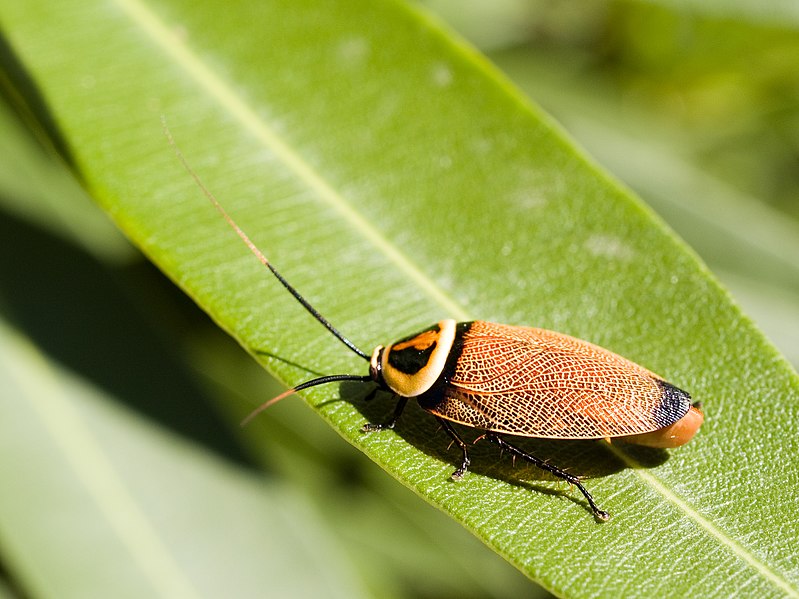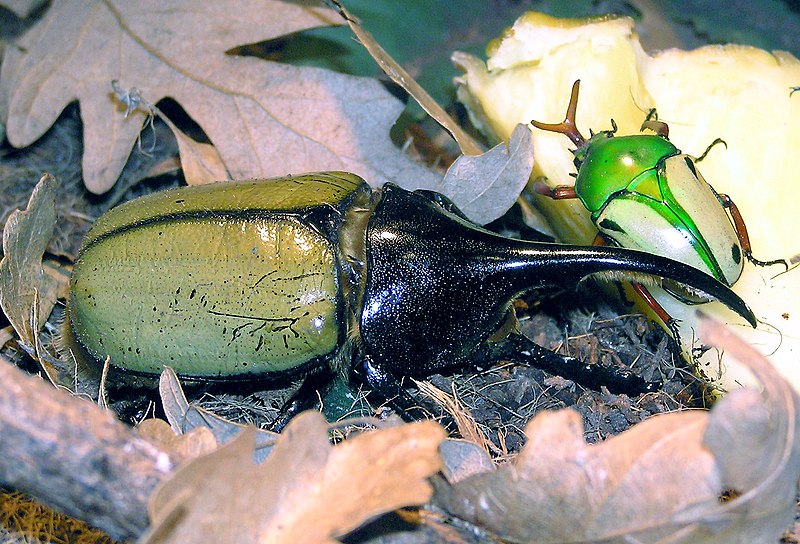 Roaches are best known to herp enthusiasts as food for captive reptiles and amphibians. However, these very interesting insects are increasingly being valued as display animals in their own right, and are appearing in the pet trade (I find the lime-green Banana Roach, Panchlora nivea, to be among the most beautiful of all insects…please see photo and article below for information on keeping roaches). Recently, entomologists were surprised to discover a new species on the grounds of a famous South African resort. Christened the Leaproach, Saltoblattela monistabularis, it is the only one of its nearly 5,000 relatives known to jump, and on first glance looks much like a grasshopper.
Roaches are best known to herp enthusiasts as food for captive reptiles and amphibians. However, these very interesting insects are increasingly being valued as display animals in their own right, and are appearing in the pet trade (I find the lime-green Banana Roach, Panchlora nivea, to be among the most beautiful of all insects…please see photo and article below for information on keeping roaches). Recently, entomologists were surprised to discover a new species on the grounds of a famous South African resort. Christened the Leaproach, Saltoblattela monistabularis, it is the only one of its nearly 5,000 relatives known to jump, and on first glance looks much like a grasshopper.
A New Species at a Tourist Attraction
The Leaproach was first collected on the grounds of South Africa’s Table Mountain National Park, a mere 10 minute drive from Cape Town (please see photo). The park is visited by over 4 million people each year. Read More »
 That Reptile Blog – Reptile, Amphibian and Exotic Pet Care and Information
That Reptile Blog – Reptile, Amphibian and Exotic Pet Care and Information



